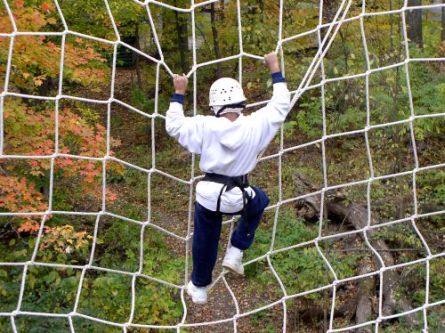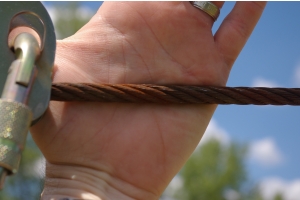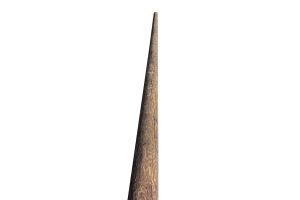Cargo Net Selection and Use

Cargo nets are a versatile and useful tool that can be used for a variety of purposes. They are ideal for storing and transporting heavy objects, and they can also be used to create temporary barriers or enclosures. Cargo nets are also a popular choice for playgrounds, ropes courses, obstacle courses, ninja courses, and other recreational structures.
Cargo nets are made by weaving together a series of ropes or cords. The ropes or cords are typically made of polydacron, nylon, polyester, hemp or manilla, and they are woven together or knotted in a variety of patterns, depending on the desired shape, strength and flexibility of the net needed for your application.
The size of a cargo net is determined by the length and width. The length and width of the net are measured from one end to the other. Cargo nets can take many shapes like square, rectangle, triangular, octagonal, and circular to name a few common shapes.
The strength of a cargo net is determined by the weight capacity of the net. The weight capacity of a net is the maximum weight that the net can safely support. Theweight Capacity is determined by the strength of teh size of rope used to make the net, the size of teh grid and teh number of horizonatal and vertical ropes used to make the net. In general you want a cargo net to be at least 5 times stronger than the maximum anticipated loading that the net will incur durring normal use.
When selecting a cargo net, it is important to consider the following factors:
- The size of the net: The net should be large enough to accommodate the number of climbers using the net (4' wide per climber as a general rule) or the objects that you will be storing or transporting.
- The strength of the net: The net should be strong enough to support 5 times the the weight of the total number of simultaneous users (climbers) or objects that you will be storing or transporting.
- The material of the net: The net should be made of a material that is durable and weather-resistant.
- The size of the grid pattern. The grid pattern should be deisgned to accomidate the hands and feet of the climbers allowing sufficient space to grap and insert feet without causinghead entraption, and or appropriately sized to prevent items from falling through the net if used for storage or lifting.
Here are some tips for selecting the right cargo net for your needs:
- If you are not sure what size or strength of net you need, consult with a professional (visit www.customcargonets.com)
- Make sure the net is made of a durable material that can withstand the elements.
- Choose a net that is the right size for your needs.
- Make sure the net is strong enough to support the weight of the climbers and/or objects that you will be storing or transporting.
Here are some specific examples of how cargo nets are used in these applications:
- Playgrounds: Cargo nets can be used to create climbing walls, tunnels, and other play structures.
- Ropes courses: Cargo nets can be used to create, climbing elements, traversing elements and/or safety nets for participants.
- Obstacle courses: Cargo nets can be used to create walls, bridges, tunnels and other obstacles.
- Ninja courses: Cargo nets can be used to create climbing walls, swinging obstacles, and other challenges.
- Other recreational structures: Cargo nets can be used to create temporary shelters, shade structures, and other recreational features.








